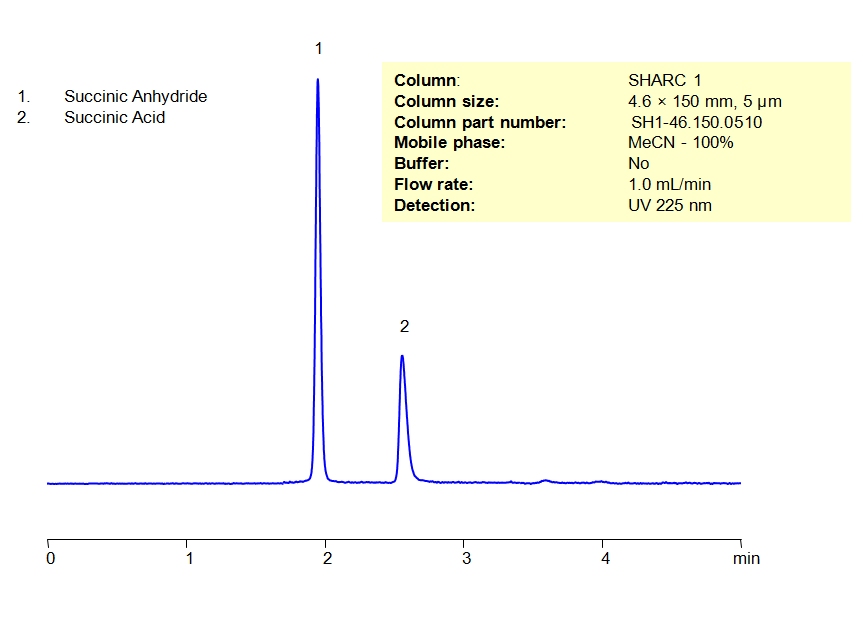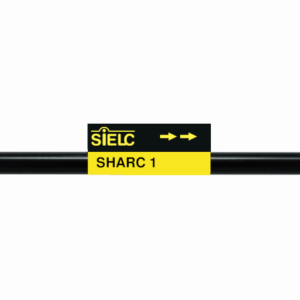Separation type: Liquid Chromatography HILIC
High Performance Liquid Chromatography (HPLC) Method for Analysis of Succinic Anhydride and Succinic Acid
Succinic acid is a key intermediary (in the form of its anion, succinate) in the electron transport chain, a process that is the key power source for our cells. It also has a few limited functions outside of the mitochondria. Succinic anhydride, its acid anhyrdie, is a colorless, crystalline compound used often in the production of polymer resins, often of the alkyd variety. It also has the ability to increase the solubility of various proteins and has other benefits for the pharmaceutical, flavor, and fragrance industries.
Succinic Anhydride and Succinic Acid can be detected in the low UV regime. Using a SHARC 1 hydrogen-bond column and a mobile phase consisting of only acetonitrile (and without a buffer), these two compounds can be separated, detected, and analyzed. This analysis method can be UV detected at 210 nm.
| Column | SHARC 1, 4.6×150 mm, 5 µm, 100A |
| Mobile Phase | MeCN- 100%* |
| Buffer | No |
| Flow Rate | 1.0 ml/min |
| Detection | UV 210 nm |
*Before running, wash the column using 0.5 % phosphoric acid in water and run this MP for a couple of hours. Then switch to pure MeCN.
| Class of Compounds | Anhydride, Acid |
| Analyzing Compounds | Succinic Anhydride, Succinic Acid |
Application Column
SHARC 1
The SHARC™ family of innovative columns represents the first commercially available columns primarily utilizing separation based on hydrogen bonding. SHARC stands for Specific Hydrogen-bond Adsorption Resolution Column. Hydrogen bonding involves an interaction or attraction between a bound hydrogen atom and molecules containing electronegative atoms, such as oxygen, nitrogen, and fluorine.
Select optionsSuccinic anhydride






